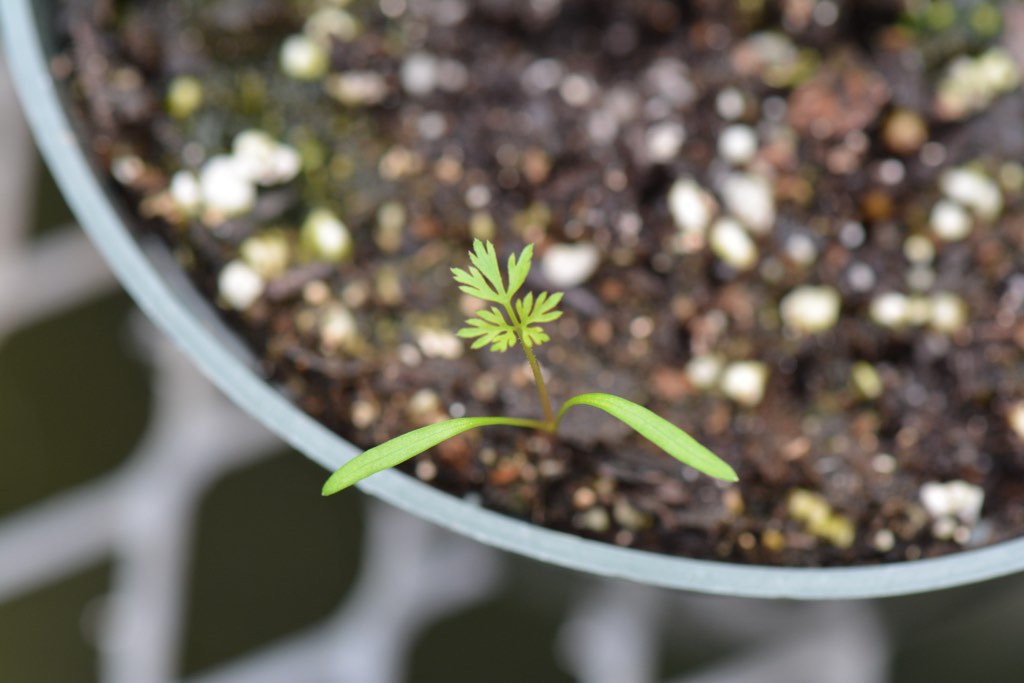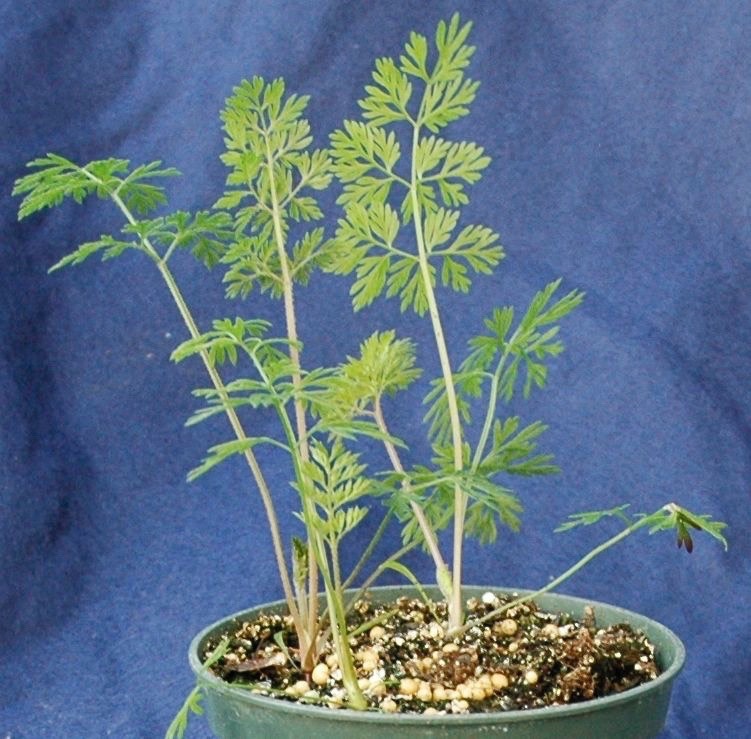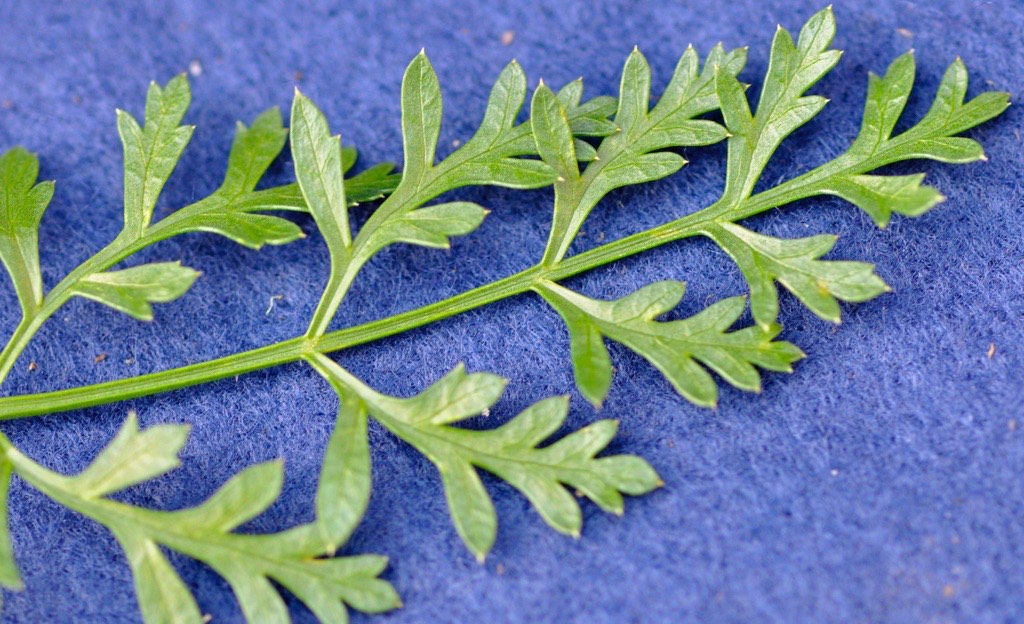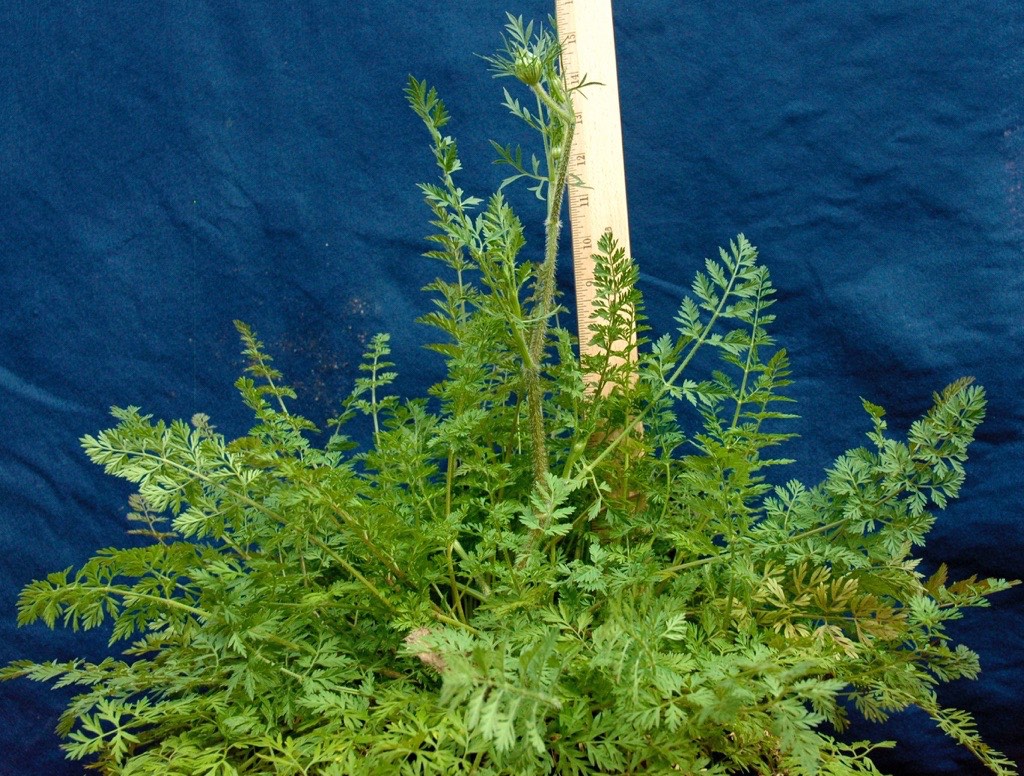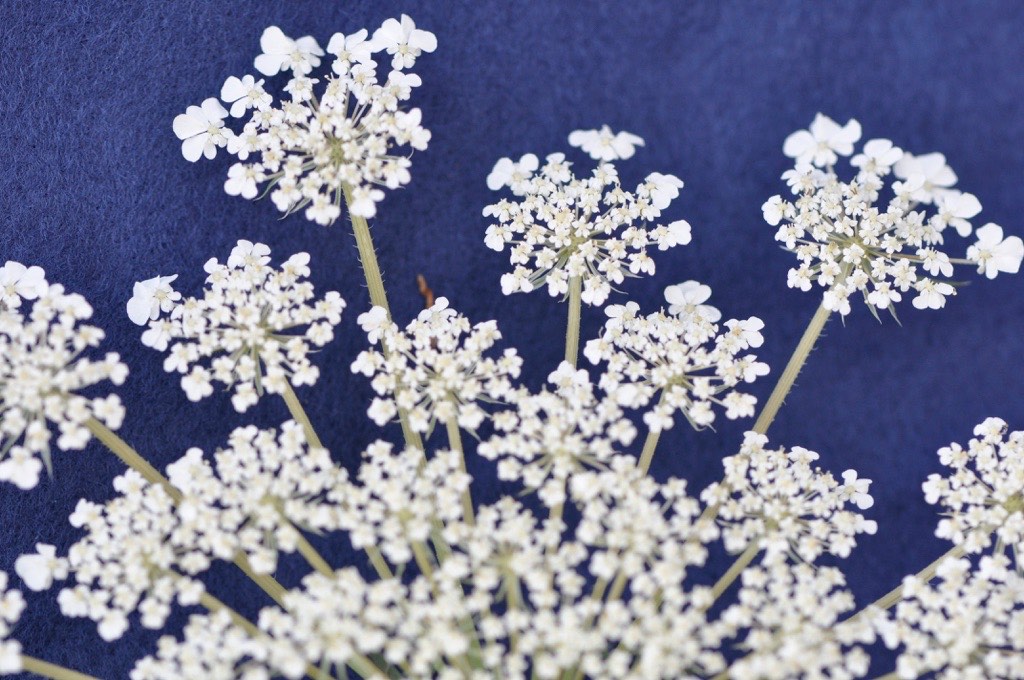Ohio’s Noxious Weeds
Wild carrot
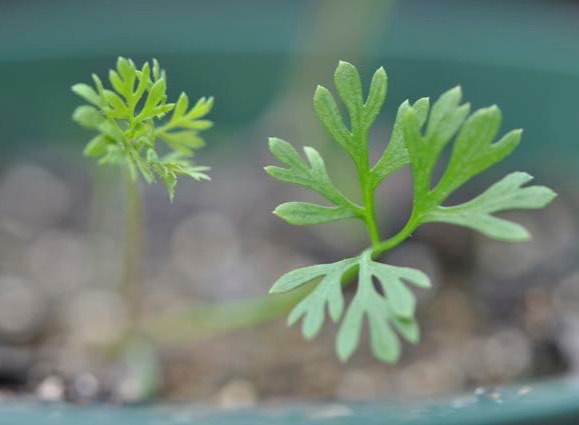
Daucus carota, wild carrot
Family: Parsley, Apiaceae.
Habitat: Dry fields, wastelands, pastures, and no-till field crops.
Life cycle: Biennial, forming a rosette the first year and producing flowers and seed in the second.
First Year Growth Habit: A basal rosette.
Second Year Growth Habit: 1-3 feet tall, branched and erect.
Leaves: Alternate, pinnately compound, finely divided and hairy.
Flowering Stem: Tall, hairy, stout, and branched.
Flower: June – October (second year). Small, lacy white 5-petaled flowers in flat-topped, umbrella shaped clusters with one dark reddish-brown flower in the center. Flower closes up and turns brown as it matures.
Root: Fleshy taproot.
Similar plants: Leaves have the appearance and odor of a garden carrot. Wild carrots taproot is not as large as the garden carrot. The plant also resembles poison hemlock (Conium maculatum). However, wild carrot has a hairy stem while poison hemlock has a smooth stem with purple blotches. The dark floret in the center of the inflorescence in second year and a distinctive carrot smell in the first year will also help distinguish this common weed.
The problem is…. Prolific seed production and a large, fleshy taproot that is difficult to pull. Because the weed is attractive it has been allowed to spread in many areas.
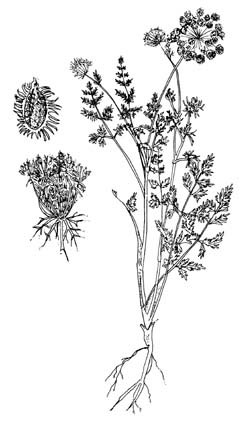
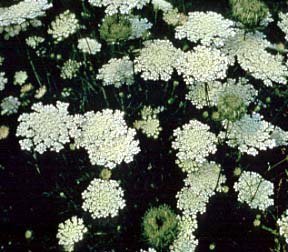
The flower of wild carrot has a reddish-brown floret in the center, which can aid in its identification.
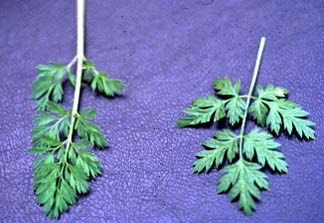
First-year leaves of wild carrot (left) and poison hemlock (right) may appear similar.
